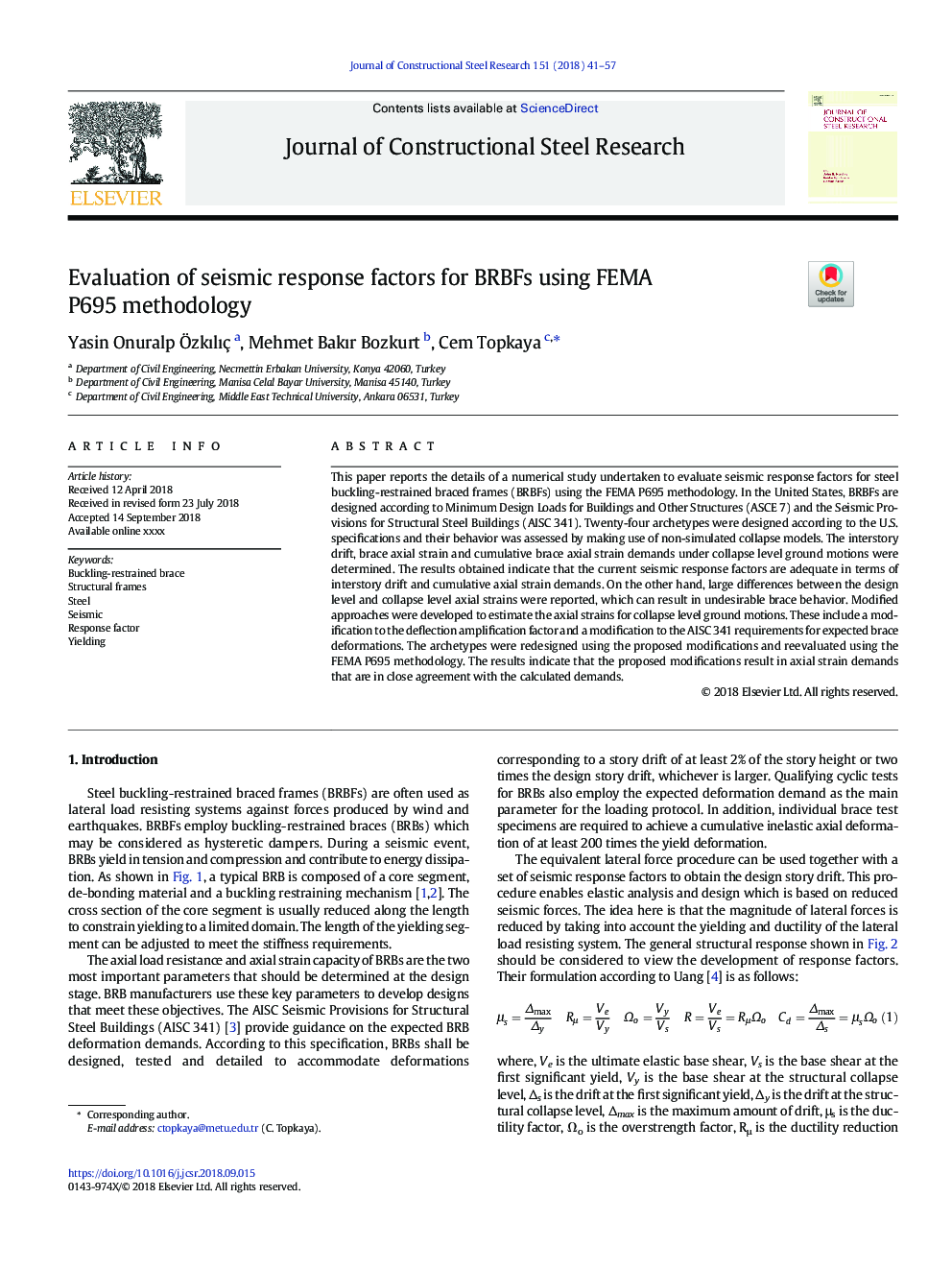| Article ID | Journal | Published Year | Pages | File Type |
|---|---|---|---|---|
| 10225402 | Journal of Constructional Steel Research | 2018 | 17 Pages |
Abstract
This paper reports the details of a numerical study undertaken to evaluate seismic response factors for steel buckling-restrained braced frames (BRBFs) using the FEMA P695 methodology. In the United States, BRBFs are designed according to Minimum Design Loads for Buildings and Other Structures (ASCE 7) and the Seismic Provisions for Structural Steel Buildings (AISC 341). Twenty-four archetypes were designed according to the U.S. specifications and their behavior was assessed by making use of non-simulated collapse models. The interstory drift, brace axial strain and cumulative brace axial strain demands under collapse level ground motions were determined. The results obtained indicate that the current seismic response factors are adequate in terms of interstory drift and cumulative axial strain demands. On the other hand, large differences between the design level and collapse level axial strains were reported, which can result in undesirable brace behavior. Modified approaches were developed to estimate the axial strains for collapse level ground motions. These include a modification to the deflection amplification factor and a modification to the AISC 341 requirements for expected brace deformations. The archetypes were redesigned using the proposed modifications and reevaluated using the FEMA P695 methodology. The results indicate that the proposed modifications result in axial strain demands that are in close agreement with the calculated demands.
Related Topics
Physical Sciences and Engineering
Engineering
Civil and Structural Engineering
Authors
Yasin Onuralp Ãzkılıç, Mehmet Bakır Bozkurt, Cem Topkaya,
